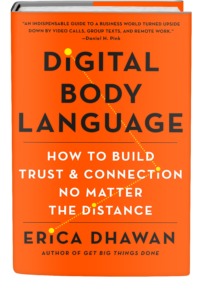Every leader faces the challenge of putting diverse people into the same room to work on a project together. It can be a very exhilarating and enriching experience or it can be a situation that sucks the life out of everyone. In his new book, “Dream Teams” Shane Snow reveals his discoveries about what makes teams work, what keeps them from becoming cohesive and cooperative, and what leaders need to do in order to increase the odds of creating a dream team in their own organization. Some of the things Shane shares are a bit counterintuitive, so be sure you listen to get the full story.
[Tweet “.@ShaneSnow explains how #leaders can build #DreamTeams that #collaborate and #create at incredible levels. #MastersOfLeadership #GetBigThingsDone @EDhawan”]The things that make us great as humans also threaten us the most
Human beings are creative, intelligent, and innovative, each one of us bringing special skills, abilities, and perspectives to the table. But those very things are exactly what causes us to fight amongst ourselves and disrupt cooperation. Shane Snow has discovered that at the heart of most failures at teambuilding is lack of cultural fit. He sees leaders as the ones who are primarily tasked with being aware of cultural issues, addressing issues as they arise, and facilitating the best environment for everyone on a team to thrive and contribute. On this episode of Masters of Leadership, you’ll hear Shane describe what his research has taught him about building dream teams and how leaders can take proactive steps to enhance the culture in their organization and get better results from their teams.
What is it that makes a dream team, a dream team?
One of the things I was eager to ask Shane is this: What is it that makes dream teams so effective? His answer is a little bit surprising. First, he says dream teams need an element of cognitive diversity, meaning there needs to be a variety of perspectives and approaches to problem solving and creativity. That makes sense. But next, he says that each dream team also has an element of cognitive friction, where the ideas being proposed become at odds with each other and the individuals on each side of the debate have to learn how to work together to overcome the tensions that exist so they can create something better. Finally, every person on the team needs to possess intellectual humility, the ability to allow their ideas and perspectives to be criticized and enhanced by others. As you can see, Shane has a wealth of knowledge about these things, and you’ll hear him share them, on this episode.
[Tweet “What is it that makes a #DreamTeam, a dream team? Find out from @ShaneSnow on this episode of #MastersOfCollaboration with @ShaneShow and @EDhawan #GetBigThingsDone”]What questions should leaders be asking as they create dream teams?
When it comes to assembling the individuals who will make up your dream team, what are the things you should be considering? Naturally, one of the first things to consider is who you are placing on the team. Are they individuals who are not only competent in their area(s) of expertise but also able to handle the tension that will come from a highly charged creative environment? Will they be able to handle the cognitive friction necessary to collaborate and come up with new ideas? Finally, can YOU as a leader, provide an environment where that friction can happen in relational safety? Find out more about how to create your own dream team, on this episode of Masters of Leadership.
Two solutions to help struggling teams become outstanding: play and storytelling
When a team is struggling, there are many factors that contribute to the issues they are experiencing. Shane Snow believes there are two things leaders can integrate into their teams that will help dispel unhelpful tension and get the team back on track. First, he recommends play as a regular part of the team’s interaction. When people can do fun, non-threatening things together they are better able to see each other as human beings rather than competitors or rivals. That fosters a sense of teamwork and mutual enthusiasm. He also suggests that leaders provide contexts where individuals are encouraged to tell their own stories – on both a personal level and in regard to situations they have faced that were similar to the one the team is facing. This enables everyone to get behind the facades and see the real people involved.
[Tweet “Two solutions to help struggling #teams become outstanding: play and #storytelling. @ShaneSnow explains on this episode of #MastersOfLeadership with @ShaneShow and @EDhawan #GetBigThingsDone”]Outline of This Episode
- [1:35] Shane’s definition of leadership: Helping others unleash their potential
- [4:08] The reasons behind Shane’s writing of his new book, “Dream Teams”
- [8:45] What it is that makes some teams work and others self-destruct
- [13:23] Shane’s dive into hip-hop as an exploration of dream teams
- [20:51] Key questions leaders should be asking when trying to build dream teams
- [28:00] Tips for shifting struggling teams into dream teams
- [34:22] Sign up for Shane’s newsletter – learn about lateral thinking
Resources & People Mentioned
- www.ShaneShow.com
- www.Contently.com
- BOOK: Dream Teams
- BOOK: Smartcuts
- Shane on Twitter: @ShaneSnow
- Shane on LinkedIn
- Shane on Facebook
- Intellectual humility assessment
- Keith Yamashita of SYPartners
Connect with Erica
Erica@cotentialgroup.com
